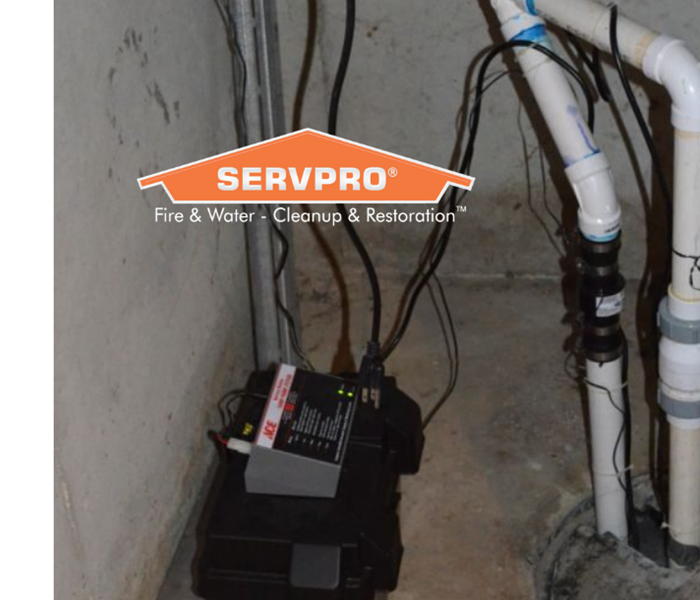Keeping Your Constantine, MI Home Dry – Sump Pump Tips
10/24/2021 (Permalink)
 If your sump pump stops working, call SERVPRO of Cass and St. Joseph Counties. We'll make it "Like it never even happened."
If your sump pump stops working, call SERVPRO of Cass and St. Joseph Counties. We'll make it "Like it never even happened."
Michigan basements are often prone to flooding and water damage if they have unknown issues or cracks in the foundation. If you have a damp basement or live in an area prone to flooding, you know how difficult the process of dealing with water damage can be. At SERVPRO of Cass and St. Joseph Counties, we’re here to make your water damage “Like it never even happened.” According to the American Society of Home Inspectors, it is estimated that more than 60% of homes have issues with water in the basement. A sump pump can be an effective option for helping to prevent water damage.
Installed in a pit in the basement, these units’ sense when the water from rain or snow melt is rising in the pit and approaching the floor level. The incoming water is then pumped outside before it can damage the home or its furnishings. Sump pumps are relatively low-maintenance devices, but you can help keep your unit operational by inspecting it regularly. Steps in a regular maintenance program can include:
- Check the discharge line to make sure it is not stopped up or frozen. If necessary, unclog the air vent hole in the line.
- Check the inlet screen to ensure that it’s not clogged with any residue or debris.
- Making sure the float component is unobstructed and can move smoothly.
- Scan the pit and remove any visible debris, mud, or stones.
- Test the pump by slowly pouring a bucket of water into the pit. The float should rise with the water level, triggering the unit to start pumping. If pumping doesn’t begin, check to see that the unit is plugged in. Your float switch or check valve may also be at fault.
- Go outside to see that water is discharging and flowing where it’s supposed to go – well away from your home.





 24/7 Emergency Service
24/7 Emergency Service